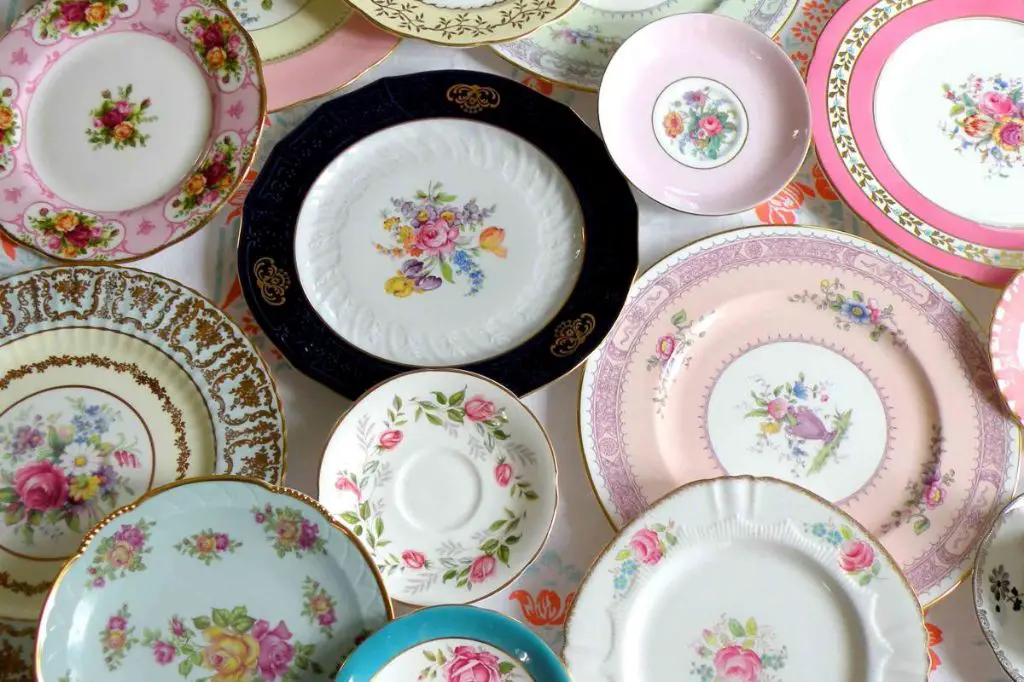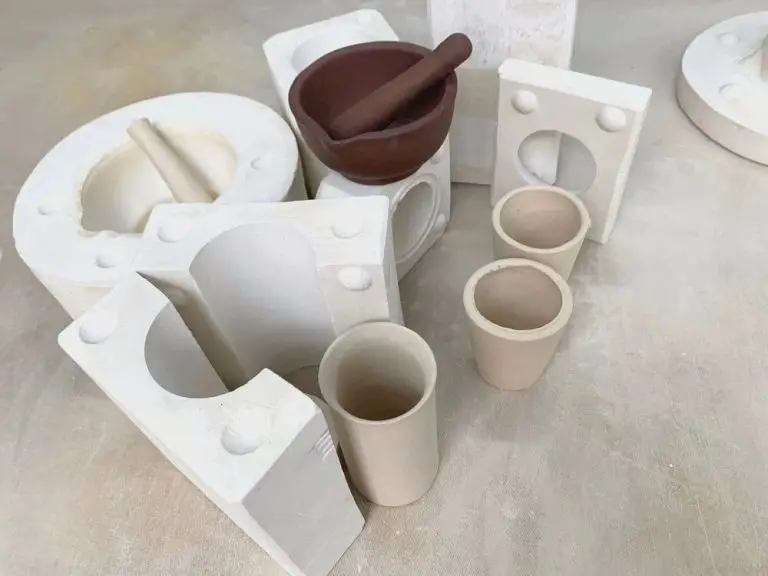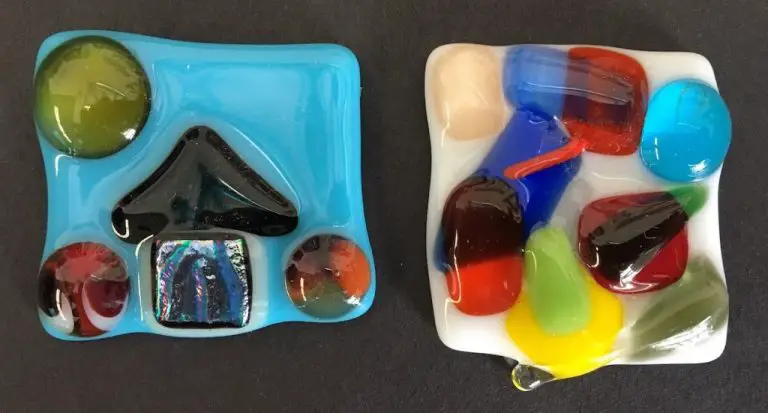Is Thomson Pottery China Dishwasher Safe?
Thomson Pottery was founded in East Liverpool, Ohio in 1871 by Charles Chester Thomson. The company was originally known as C.C. Thompson & Co. and became renowned for its fine china and dinnerware sets. By the early 1900s, Thomson Pottery had established itself as one of the leading producers of vitrified hotel china in the United States (C. C. Thompson Pottery. East Liverpool, Ohio).
The company’s china dishes were made from a vitreous china material that was highly durable and chip-resistant. Thomson Pottery china was known for its bright white color and glossy finish, making it ideal for high-end restaurants and hotels. Many of Thomson’s china patterns, such as the Athena and Provincial lines, became collectible pieces due to their artistry and quality.
China Material Properties
China dishes like those made by Thomson Pottery are a type of porcelain that consists of kaolin clay, quartz, and feldspar fired at very high temperatures. The composition results in a delicate, translucent material that is less porous than earthenware and stoneware.
According to Wikipedia, the main categories of porcelain are hard-paste, soft-paste, and bone china. Bone china contains bone ash in the mixture which improves whiteness and translucency. Thomson Pottery china does not contain bone ash so it falls under the hard-paste or soft-paste categories.
The kaolin clay in china gives it a smooth feel and allows thin production while the quartz provides strength and stability. The feldspar acts as a flux to lower the vitrification temperature. When fired at over 1200°C, the materials fuse into a non-porous, durable, and glossy final product (Noritake China).
Dishwasher Detergents
Typical dishwasher detergents contain a variety of chemical ingredients designed to cut through grease, remove stuck-on food particles, prevent spots, and sanitize dishes. The main active ingredients in most dishwasher detergents include:
- Surfactants – These wetting agents help water penetrate and remove grease and oils. Common surfactants are sodium lauryl sulfate, sodium laureth sulfate, and alkyl dimethyl amine oxide.
- Builders/Chelating agents – These ingredients soften water by binding to magnesium and calcium ions. Common options are citric acid, phosphates, and gluconates.
- Bleaches – Oxygen-based bleaches like sodium percarbonate help whiten and disinfect. Chlorine bleach can also be used.
- Enzymes – Protease, amylase, and lipase enzymes help break down and dissolve food residues.
- Anti-corrosion agents – These protect dishwasher parts from corrosion caused by salt and acidity.
- Perfumes – Added fragrances leave dishes smelling fresh.
While effective at cleaning, some ingredients like phosphates have raised environmental concerns over eutrophication in waterways. This has led some brands to formulate phosphate-free and eco-friendly detergents using substitutes like citric acid.
Sources:
https://sheetslaundryclub.com/product/dishwasher-detergent-packs
Heat Exposure in Dishwashers
Modern dishwashers use electric heating elements to heat water to high temperatures during the wash and rinse cycles. The typical dishwasher has a main wash temperature of 140-150°F (60-66°C) and a final rinse temperature of 160-165°F (71-74°C) (1). Some dishwashers have a sanitizing rinse cycle that heats water up to 180°F (82°C) in order to kill bacteria (2). The high heat helps dissolve and lift off leftover food particles and grease and sanitize dishes and utensils.
Dishwasher heating elements are usually located at the bottom of the appliance. They rapidly bring cold water entering the dishwasher up to the target temperature. The heating process happens independently of the wash pump and spray arms. Once the correct temperature is reached, a thermostat turns off the heating element.
While high heat is necessary for cleaning and sanitization, it can damage some dinnerware if exposed for too long. China and porcelain contain natural clays that expand and contract based on temperature changes. Drastic shifts from cold to hot can lead to cracks or warping. This is why it’s important to understand a specific dishware’s tolerance.
(1) https://www.houzz.com/discussions/3218331/what-is-your-feeling-on-dishwashers
(2) https://www.expertsure.com/ultimate-guide-to-energy-efficient-home/appliances-and-home-electronics/
Water Pressure
Dishwashers rely on water pressure to effectively spray water and detergent to clean dishes. Most dishwashers require a minimum of 20 psi (pounds per square inch) of water pressure for optimal performance. However, the ideal water pressure for a dishwasher is between 40-120 psi according to most appliance manufacturers. For example, Frigidaire dishwashers are designed for 120 psi water pressure. Higher water pressure allows the dishwasher spray arms to rotate faster and distribute water more forcefully to remove stuck-on food particles.
If the home’s water pressure is lower than the dishwasher’s recommended range, it can result in improperly cleaned dishes due to weak water spray. Some signs of low water pressure include longer cycle times, spots on dishes, and detergent residue left on dishes. To improve dishwasher performance with low water pressure, it’s recommended to inspect and clean the dishwasher filter and spray arms regularly to remove any clogs.
Manufacturer Guidance
The Thomson Pottery website states that their dinnerware is dishwasher safe, but they recommend handwashing to preserve the appearance and finish over time. They advise using a gentle cycle and allow dishes to air dry if machine drying to prevent crazing of the glaze (fine cracking). Thomson Pottery also warns against soaking dishes prior to washing as this can dull finishes. While technically dishwasher safe, they prefer handwashing their stoneware with warm water and mild detergent using a soft cloth or sponge.

According to the product details on HomeDepot.com, Thomson Pottery dishes are microwave and dishwasher safe. The manufacturer confirms that all current dinnerware patterns are durable enough for the dishwasher.
Experiences of Owners
Many owners of Thomson Pottery china have shared their experiences with washing the dishes in the dishwasher. According to customer reviews on Amazon, the Quadro 16-pc set is “dishwasher safe” (source). Another reviewer of the Maison 16-pc set says the “dinnerware is lovely” and of “great quality” even after washing in the dishwasher (source).
On Etsy, a seller confirms that the birdhouse china pattern plates are “microwave and dishwasher safe as well,” based on continued use and washing (source). Reviews indicate that owners have not noticed any damage, cracking, or other issues after washing their Thomson Pottery china in the dishwasher repeatedly.
Expert Opinions
China experts generally advise against putting fine china in the dishwasher. According to Replacements, a company specializing in discontinued china, heat and water pressure can damage delicate china patterns over time. The high heat in dishwashers can cause crazing, cracks, or fading of decorated china (The Washington Post).
Southern Living recommends handwashing china, especially antique or decorated pieces, to preserve them. The water pressure and heat in dishwashers risks chipping decorative edges or causing paint to bleach out. Gentle handwashing is the best way to clean china while minimizing damage (Southern Living).
Overall, china specialists caution against machine washing fine china. The risks of damage from heat and water pressure typically outweigh the convenience of using a dishwasher. To preserve decorative china patterns, delicate handwashing is recommended.
Best Practices
Here are some tips for safely washing china in a dishwasher:
Use a gentle or delicate cycle setting. The high heat and harsh spray of normal cycles can damage china. Selecting a gentle cycle will wash at a lower temperature and use a lighter spray (Southern Living).
Choose a mild detergent without bleach or lemon. Harsh detergents with strong citric acids or bleaches can etch or fade delicate china. Look for a gentle detergent formulated for fine china (WikiHow).
Use a dishwasher basket or rack designed for china. This will cushion and separate pieces to prevent chipping and rubbing. Make sure pieces are secure and unable to bump against each other (Asien’s Appliance).
Allow china to cool before unloading the dishwasher. thermal shock from a rapid temperature change could crack or break china. Let the dishes air dry in the dishwasher before carefully unloading.
Inspect for damage after washing. Look for cracks, chips, faded colors or patterns. Stop washing in the dishwasher if damage occurs.
Consider hand washing one piece first. Monitor a dish closely after the first wash to confirm the dishwasher is not causing damage.
Conclusion
Based on the information presented, it seems that Thomson Pottery china is likely safe to wash in the dishwasher as long as you take certain precautions. The vitreous china material is durable enough to withstand high heat and water pressure from dishwashers. However, detergent choice and proper loading techniques are key to preventing chips and crazing. Use a gentle detergent without bleach or abrasives and make sure plates and platters don’t touch or bang against each other during the wash cycle. Handwashing is still recommended for high value, antique, or hand-painted china to be extra careful. But for everyday Thomson Pottery dishes, the dishwasher should be fine if used with care. Always check the manufacturer’s recommendations to be sure.





